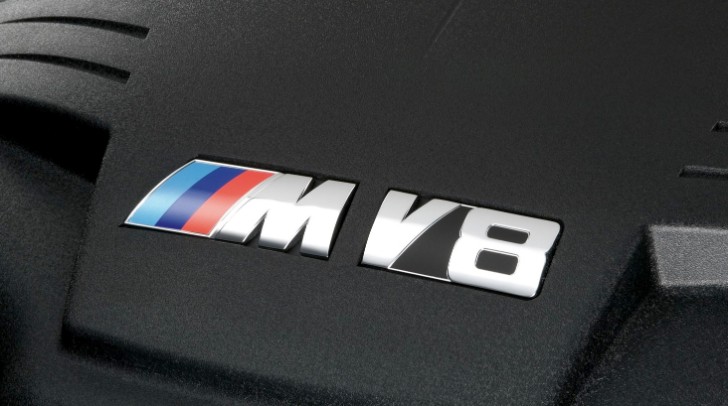With the current air pollution issues and CO2 regulations in place, BMW’s naturally aspirated engines were bound to disappear at one point. Unfortunately, that moment came during our lifetime and we’re now being offered only turbocharged engines that do the job but not in the same way.
Coincidence or not, the last NA engine ever made by BMW was one developed by the Motorsport division, encompassing some of their best work to date. We’re talking, of course, about the S65 units that used to power the M3 models alone.
No other model used it (as is the case with the current S63 unit today) and this exclusive character makes it even more desirable. The last model to be fitted with it was the 2013 E93 M3 Convertible that went out of production last autumn.
Derived from another legendary unit, the S85 5-liter V10 engine from the E60 M5, the 4-liter V8 was capable of revving up to a redline of 8,400 RPM, making a unique sound on the way. As for the power it used to make, it good to remember that there were two variants offered.
In the stock guise, the S65B40 unit used to make 420 HP and 400 Nm (295 lb-ft) of torque between 3,900 and 8,300 RPM. However, the S65B44 model had an increased displacement, up to 4.4-liters and made 444 HP and 440 Nm (320 lb-ft) of torque between 3,750 and 8,300 RPM. That unit was only used in the 250 limited edition BMW E92 M3 GTS models.
It’s also interesting to point out that, just like the S65 was replaced by the S55 unit found on the 2015 M3 due to CO2 emission standards, the NA unit was also developed because its predecessor was also incompatible with new regulations. The S54 unit fitted on E46 M3s before it was not compatible with the Euro V and California Air Resource Board (CARB) standards and had to be replaced.
The new one used a double-VANOS variable valve timing system and a 12.0:1 compression ratio and was 15 kg lighter than its predecessor, that had a 3.2-liter displacement and used only 6 cylinders. That’s because of a conventional wet-sump lubrication system with two oil pumps was used instead of the three pump dry sump system of the engine it was based on.
Furthermore, since it raised the bars so high, especially in the sound department, the S55 engine that now follows in its footsteps has a really hard time convincing people it’s just as good, if not even better. In the sound department, you can’t beat a V8 but maybe the track performance and fuel efficiency of the turbocharged version will eventually prevail. We’ll just have to wait and see.
Until then, we prepared a photo gallery of the retired unit that will allow you to study it in detail and even, maybe, change your wallpaper.
No other model used it (as is the case with the current S63 unit today) and this exclusive character makes it even more desirable. The last model to be fitted with it was the 2013 E93 M3 Convertible that went out of production last autumn.
Derived from another legendary unit, the S85 5-liter V10 engine from the E60 M5, the 4-liter V8 was capable of revving up to a redline of 8,400 RPM, making a unique sound on the way. As for the power it used to make, it good to remember that there were two variants offered.
In the stock guise, the S65B40 unit used to make 420 HP and 400 Nm (295 lb-ft) of torque between 3,900 and 8,300 RPM. However, the S65B44 model had an increased displacement, up to 4.4-liters and made 444 HP and 440 Nm (320 lb-ft) of torque between 3,750 and 8,300 RPM. That unit was only used in the 250 limited edition BMW E92 M3 GTS models.
It’s also interesting to point out that, just like the S65 was replaced by the S55 unit found on the 2015 M3 due to CO2 emission standards, the NA unit was also developed because its predecessor was also incompatible with new regulations. The S54 unit fitted on E46 M3s before it was not compatible with the Euro V and California Air Resource Board (CARB) standards and had to be replaced.
The new one used a double-VANOS variable valve timing system and a 12.0:1 compression ratio and was 15 kg lighter than its predecessor, that had a 3.2-liter displacement and used only 6 cylinders. That’s because of a conventional wet-sump lubrication system with two oil pumps was used instead of the three pump dry sump system of the engine it was based on.
Furthermore, since it raised the bars so high, especially in the sound department, the S55 engine that now follows in its footsteps has a really hard time convincing people it’s just as good, if not even better. In the sound department, you can’t beat a V8 but maybe the track performance and fuel efficiency of the turbocharged version will eventually prevail. We’ll just have to wait and see.
Until then, we prepared a photo gallery of the retired unit that will allow you to study it in detail and even, maybe, change your wallpaper.














